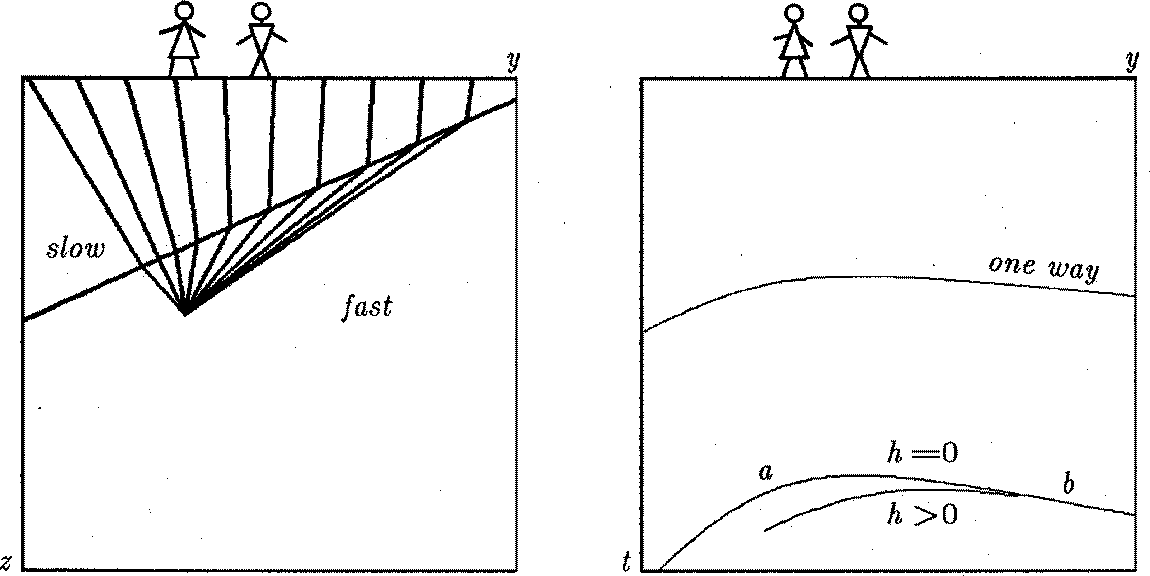 |
Figure 21 Rays emerging from a point scatterer beneath a velocity wedge (left). Travel-time curve (right). The slope at a is the negative of that at b. The midpoint between a and b is at the top of the h>0 curve.
Figure 21 shows a point scatterer below a dipping interface. As usual there is a higher velocity below.
 |
This is a simple prototype for many lateral-velocity-variation problems. Surface arrival times will be roughly hyperbolic with distortion because of the velocity jump at the interface. The minimum travel time (hyperboloid top) has been displaced from its usual location directly above the point scatterer. Observe that
The travel-time curve is roughly hyperbolic, but the asymptote on the left side gives the velocity of the medium on the left side, and the asymptote on the right gives the velocity on the right.
Let T(x) denote the travel time from the point scatterer
to the surface point x.
The travel time for a constant-offset section
is then ![]()
![]() .To find the earliest arrival, set
.To find the earliest arrival, set ![]() .This proves that the slope at a on Figure 21
is the negative of the slope at b.
This shows why the displacement of the top of the hyperboloid
from the scatterer increases with offset.
.This proves that the slope at a on Figure 21
is the negative of the slope at b.
This shows why the displacement of the top of the hyperboloid
from the scatterer increases with offset.
Lateral velocity variation causes hyperbolas to lose their symmetry. Computationally, it is the lens term that tilts hyperbolas, causing their tops to move laterally.